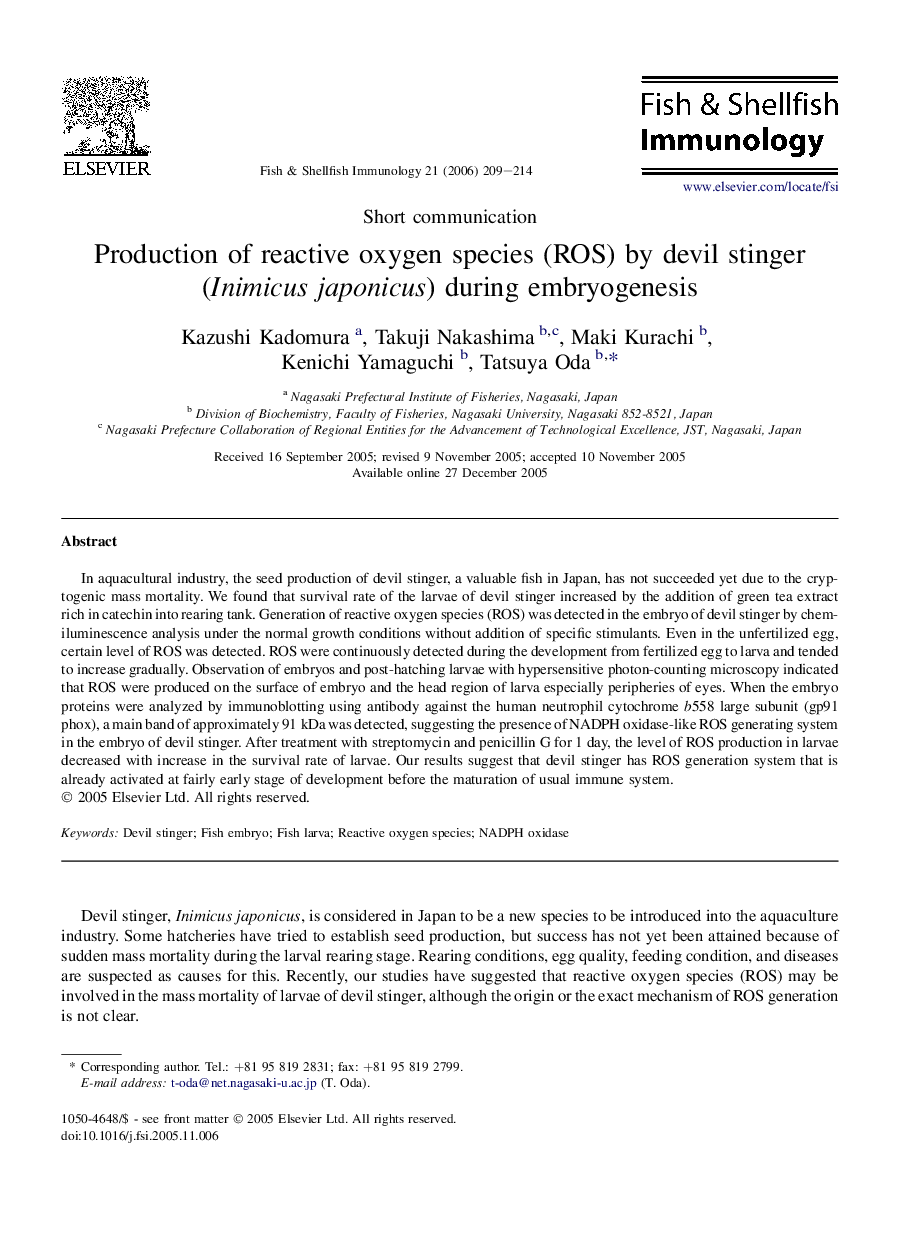| Article ID | Journal | Published Year | Pages | File Type |
|---|---|---|---|---|
| 2433491 | Fish & Shellfish Immunology | 2006 | 6 Pages |
In aquacultural industry, the seed production of devil stinger, a valuable fish in Japan, has not succeeded yet due to the cryptogenic mass mortality. We found that survival rate of the larvae of devil stinger increased by the addition of green tea extract rich in catechin into rearing tank. Generation of reactive oxygen species (ROS) was detected in the embryo of devil stinger by chemiluminescence analysis under the normal growth conditions without addition of specific stimulants. Even in the unfertilized egg, certain level of ROS was detected. ROS were continuously detected during the development from fertilized egg to larva and tended to increase gradually. Observation of embryos and post-hatching larvae with hypersensitive photon-counting microscopy indicated that ROS were produced on the surface of embryo and the head region of larva especially peripheries of eyes. When the embryo proteins were analyzed by immunoblotting using antibody against the human neutrophil cytochrome b558 large subunit (gp91 phox), a main band of approximately 91 kDa was detected, suggesting the presence of NADPH oxidase-like ROS generating system in the embryo of devil stinger. After treatment with streptomycin and penicillin G for 1 day, the level of ROS production in larvae decreased with increase in the survival rate of larvae. Our results suggest that devil stinger has ROS generation system that is already activated at fairly early stage of development before the maturation of usual immune system.
